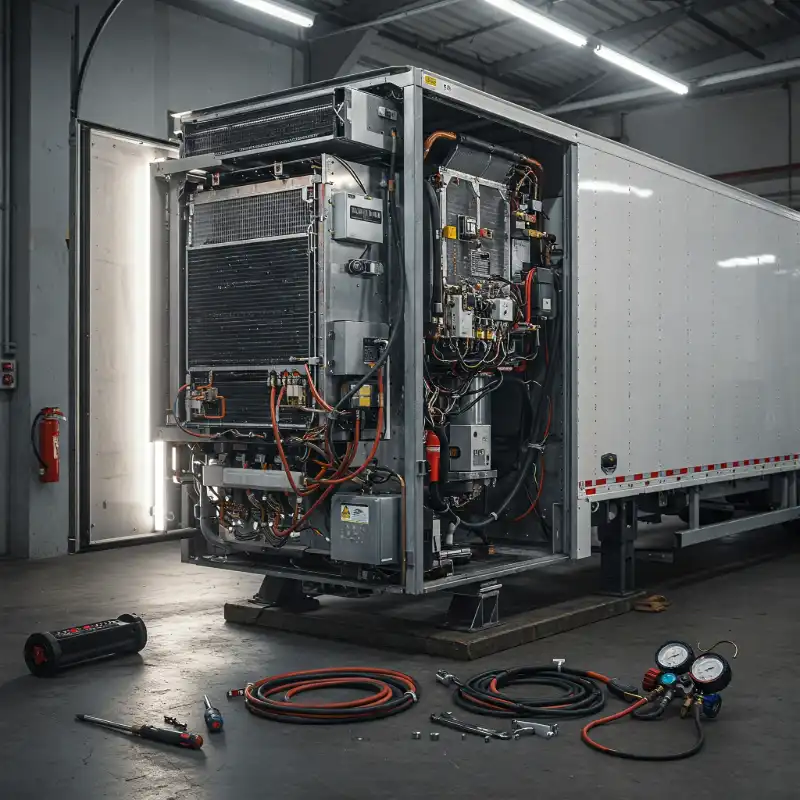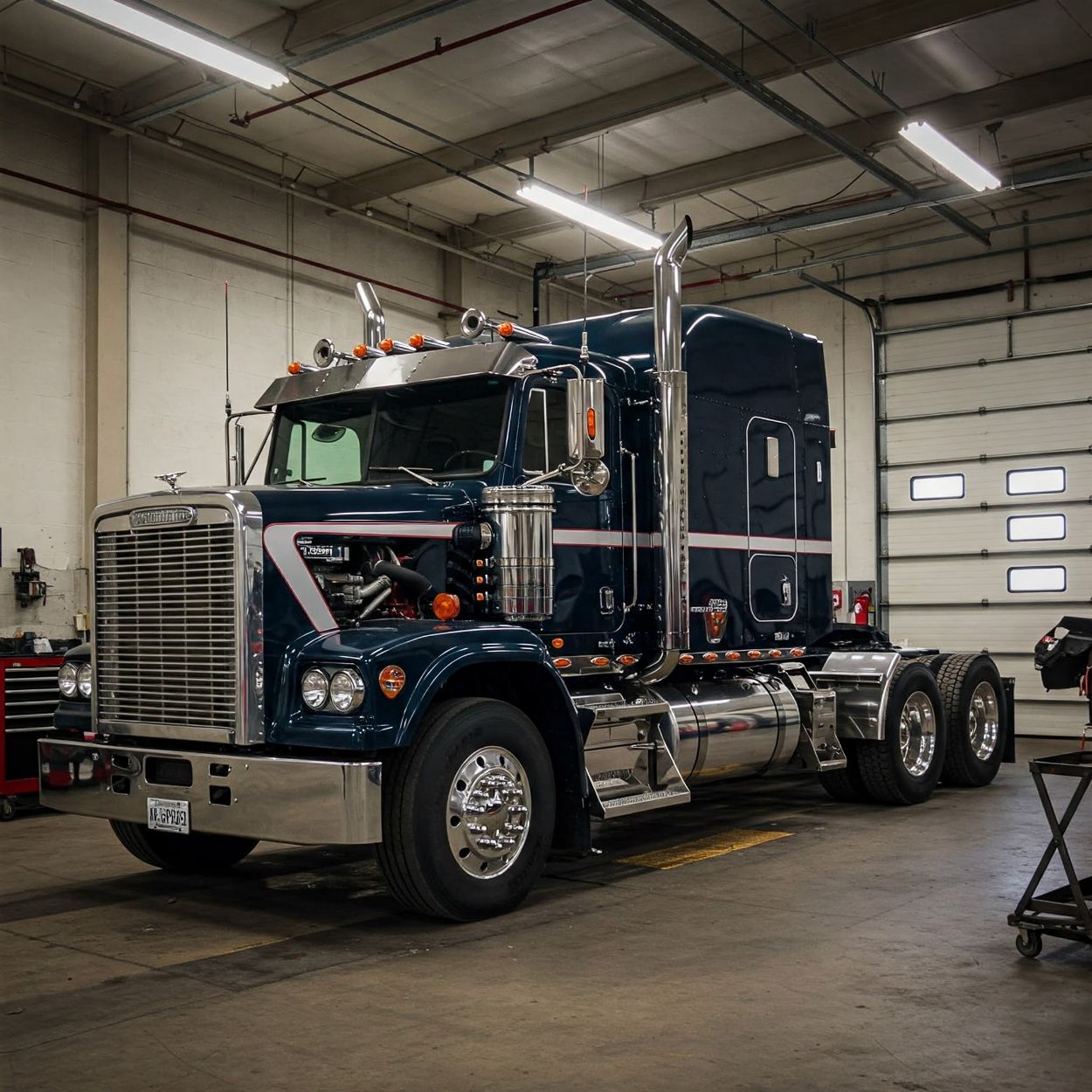
As truckers, we often find ourselves battling the elements, from heavy rainfall to wildfires and everything in between. At Integrity Fleet in Conroe, Texas, we know that preparing for inclement weather is crucial to ensure not only the safety of our drivers but also the efficiency and longevity of our trucks. In this guide, we'll dive into the essentials of weatherproofing, maintaining adequate tread depth, and handling the unique challenges posed by various weather phenomena.
Battling Heavy Rainfall: Staying Safe on Slippery Roads
Heavy rainfall can turn highways into hazardous zones, making visibility poor and roads slick. Here’s how to weatherproof your rig and stay safe.
Weatherproofing Your Truck
Weatherproofing your truck isn’t just about keeping the rain out—it's about making sure your vehicle can handle the wet conditions it will encounter. Check your wipers and replace them if they’re leaving streaks. Ensure your windshield washer fluid is topped off and that the defroster works efficiently. Sealing any gaps around doors and windows can prevent leaks that might damage your electrical systems or interior components.
Maintaining Adequate Tread Depth
One of the most critical aspects of driving safely in heavy rain is maintaining proper tire tread depth. Tires with insufficient tread are more prone to hydroplaning, where the tires lose contact with the road surface, causing a loss of control. The recommended tread depth for wet conditions is at least 4/32 of an inch. Regularly inspect your tires and replace them as needed. Don’t forget to check the tire pressure too; under-inflated tires can lead to poor handling and increased wear.
Effective Braking Techniques
In wet conditions, braking distances can be significantly longer. To mitigate this, adopt the habit of gentle braking and keeping a greater distance from the vehicle in front of you. Anti-lock braking systems (ABS) are a great help here, as they prevent the wheels from locking up during heavy braking, maintaining traction with the road.
Navigating Through Wildfires: A Different Kind of Haze
Wildfires present a unique challenge, with reduced visibility and the threat of ash clogging your air filters. Here's how to prepare.
Handling Reduced Visibility
Smoke from wildfires can drastically reduce visibility, making it akin to driving in heavy fog. Turn on your headlights and fog lights to improve your visibility to other drivers. Reduce your speed and increase your following distance to allow more reaction time. If visibility becomes too poor, it’s safer to pull over to a rest area until conditions improve.
Protecting Your Engine from Ash
Ash from wildfires can clog your air filters, reducing engine efficiency and potentially causing damage. Regularly check and replace your air filters more frequently during wildfire season. Consider carrying spare filters in your truck, as they can become saturated with ash quickly. An engine that's choked with ash won’t perform efficiently and might even overheat.
Cab Filtration Systems
Investing in a high-quality cabin air filtration system can help protect you from inhaling harmful particulates. These systems can filter out smoke and ash, ensuring the air inside your cab remains clean and breathable.
Dealing with Tornadoes and Severe Storms
Tornadoes and severe storms can develop rapidly, leaving little time to react. Here's how to stay safe.
Monitoring Weather Conditions
Stay informed about the weather conditions along your route. Modern weather apps and truck-specific GPS systems can provide real-time updates. If a tornado warning is issued, seek shelter immediately. Underpasses and overpasses are not safe spots; instead, look for a sturdy building or a designated storm shelter.
Securing Your Load
High winds can make your load a hazard to other motorists if not properly secured. Double-check that all cargo is securely fastened. Consider lowering the height of your load if possible, as this reduces wind resistance and the risk of tipping.
Post-Storm Inspection
After driving through a severe storm, inspect your truck for any damage. Look for loose parts, damaged tires, and ensure that your lights and mirrors are intact. Addressing these issues promptly can prevent more significant problems down the road.
Managing High Winds: Keeping Control of Your Vehicle
High winds can pose a serious threat, especially for high-profile vehicles like trucks. Here’s how to handle it.
Adjusting Your Driving Technique
In high winds, it’s crucial to keep both hands on the wheel and be prepared for sudden gusts that can push your vehicle sideways. Reduce your speed to maintain control and increase your following distance to allow more time to react to other vehicles swerving.
Weight Distribution and Load Management
Proper weight distribution can help stabilize your vehicle in high winds. Ensure your load is balanced and secured. An uneven load can increase the risk of tipping.
Choosing the Right Route
Whenever possible, plan your route to avoid areas prone to high winds. Routes that are sheltered by hills or forests can provide some protection from gusts. If the winds are too strong, it may be safer to pull over and wait for conditions to improve.
Confronting Fog: Seeing Through the Murk
Fog can descend without warning, turning clear roads into a hazy maze. Here’s how to keep moving safely.
Using Your Lights Effectively
In foggy conditions, use your low beams or fog lights to improve visibility. High beams can reflect off the fog, reducing visibility further. Make sure all your lights, including tail lights, are clean and functional to make your truck more visible to others.
Keeping Your Distance
Reduce your speed and increase your following distance when driving in fog. This gives you more time to react to any obstacles or sudden stops ahead. Use the right edge of the road or lane markings as a guide to stay on track.
Avoiding Sudden Movements
Smooth and gradual movements are key when driving in fog. Avoid sudden stops, starts, and lane changes. Signal well in advance to alert other drivers of your intentions.
Mitigating Heatwaves: Protecting Yourself and Your Truck
Heatwaves can be as dangerous as any storm. High temperatures can cause your truck to overheat and pose a risk to your health.
Keeping Your Engine Cool
Regularly check your coolant levels and ensure your radiator is functioning correctly. An overheating engine can lead to severe damage and costly repairs. Consider using a higher grade of coolant that provides better heat resistance.
Hydrating and Staying Cool
Ensure you have plenty of water and stay hydrated. Heat exhaustion can sneak up on you, especially on long hauls. Use sunshades and keep your cab’s air conditioning in good working order to stay cool.
Monitoring Tire Pressure
High temperatures can cause your tire pressure to increase, leading to blowouts. Regularly check and adjust your tire pressure to prevent this.
Final Thoughts
Preparing for inclement weather is an essential part of a trucker's routine. By weatherproofing your truck, maintaining adequate tread depth, and adapting to various weather conditions, you can ensure your safety and the longevity of your vehicle. At Integrity Fleet in Conroe, Texas, we’re committed to helping you navigate these challenges with confidence. Remember, a well-prepared truck is a safe truck. Stay safe out there, and keep those wheels rolling!
More Articles


7 Errors in Refrigerated Truck Maintenance and Their Fixes
7 Errors in Refrigerated Truck Maintenance and Their Fixes
Avoid costly breakdowns and cargo loss with proper refrigerated truck maintenance. Learn about the top 7 reefer maintenance mistakes and how to fix them.


What Are the Benefits of Telematics in Managing Food Delivery Fleets?
What Are the Benefits of Telematics in Managing Food Delivery Fleets?
Discover how telematics can optimize your food delivery fleet in Texas. Reduce fuel costs, improve efficiency, enhance safety, and ensure faster deliveries with real-time tracking and smart analytics.


How to Reduce Fuel Costs in Your Grocery Delivery Fleet
How to Reduce Fuel Costs in Your Grocery Delivery Fleet
Discover effective ways to cut fuel costs in your grocery delivery fleet with tips on maintenance, route optimization, and technology in Texas.
